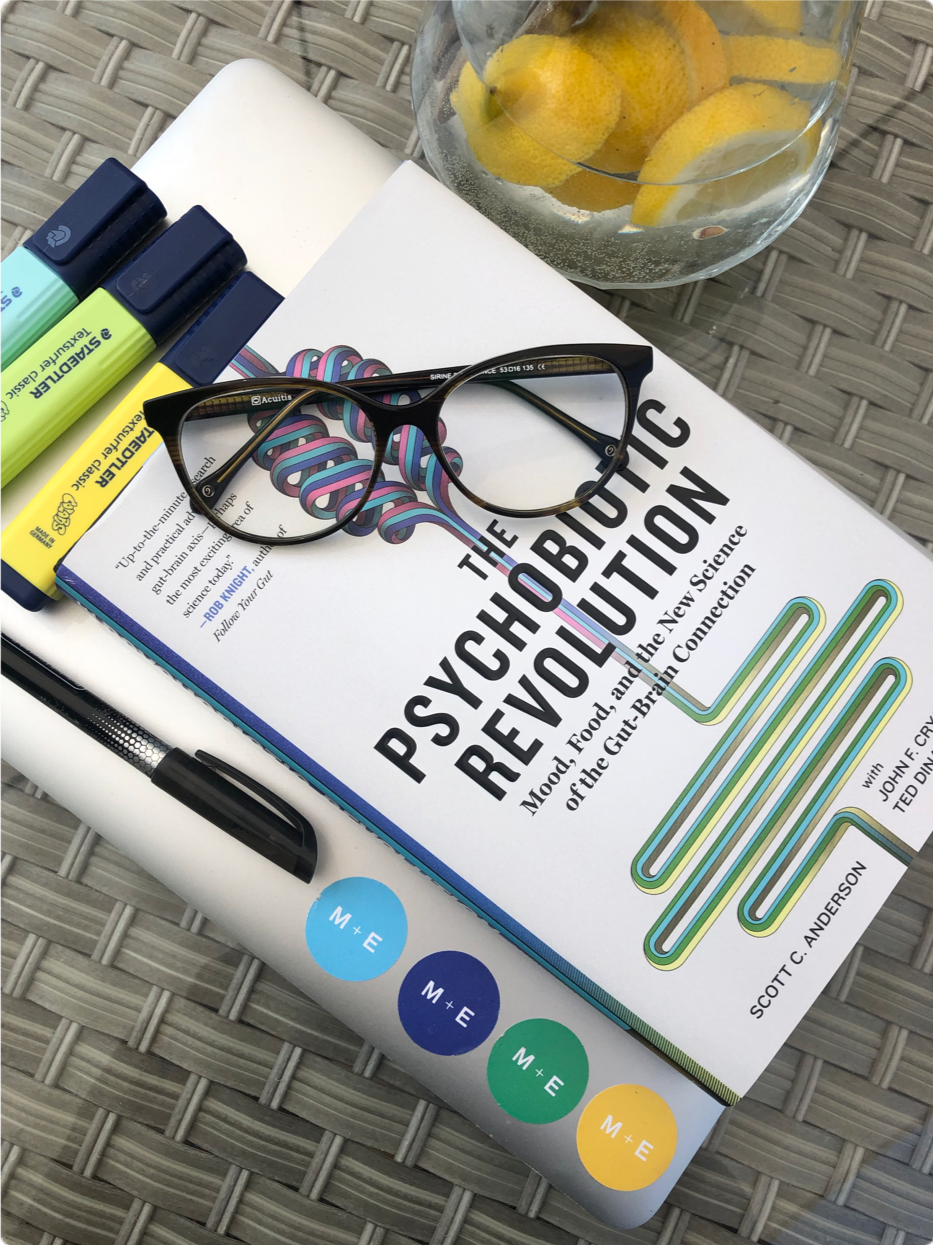
Reasons You're Always So Tired: Your Nervous System Reset
Are you feeling exhausted and a little out of control? Like you don’t know how to calm yourself down? Most of us do, at one time or another. That out of control feeling is usually associated with the sympathetic nervous system.
Our sympathetic nervous system is the part of our nervous system that mobilises you into action.
Why do I always feel tired?

Rather than look for something to give you an instant energy fix, what you might need is something to help your system restore itself to help you feel calm and relaxed.
If your nervous system detects a threat, real or perceived, psychological or physical, it will trigger your fight/flight/freeze response.
It can leave you feeling burned out, tired but at the same time wired and unable to relax.
Once the threat goes your parasympathetic nervous system would usually kick in, which is the part that calms us down.
But if you get stuck with your system ready for action your body is constantly getting ready to protect you.
It's on high alert - hyper vigilant - never able to switch off and recover.
Your body is set protect you.
Do you feel like you are constantly switched 'on'?
Your vagus nerve is the most influential nerve in your parasympathetic nervous system.
It functions like your body’s natural reset button.
Learning how to stimulate your vagus nerve allows you to feel calm and back in control. Back to feeling like yourself again.
How to use your senses to stop feeling tired
I’m a huge advocate of multi sensory stimulation to maintain your social, cognitive and emotional wellbeing. Your senses are the messages that your brain receives to try to 'make sense' of what is going on in and around you. They are key to managing your vagus nerve.
It was Aristotle who first suggested that we have five senses, but although this is still a commonly held belief, we actually have many more.
In addition to the senses that we use to interpret our outer worlds sight, smell, sound, taste, touch you also have senses that help you manage your inner world.
- Thermoception - a sense of temperature
- Nociception - a sense of pain
- Proprioception - a sense of awareness of our limbs
- Equilibrioception - a sense of balance
- Interoception - your brain’s sense of your body’s inner state
- Neuroception - your neural circuits assessing whether situations or people are safe, dangerous, or life threatening
These last two senses play a pivotal role in your emotional wellbeing.
The core task of a brain working in service to the body is allostasis:
regulating the body’s internal systems by anticipating needs and preparing to satisfy them before they arise.
Interoception
Interoception is your brain’s representation of sensations from your own body and is central to everything from thoughts, to emotions, to decision making, and your sense of self.
Interoception helps you understand what’s going on in your body thanks to signals from internal organs like your cardiovascular system, your lungs, your gut, your bladder and your kidneys.
Here's a test to see how aware you are of your body:

If you’re sitting in a safe and comfortable position, close your eyes and try to feel your heart beating in your chest. Can you, without moving your hands to take your pulse, feel each movement and count its rhythm? Or do you struggle to detect anything at all?
Here's a 30 second exercise to help you tune in more to your body:
- Start by turning everything that is making a noise off.
- Close your eyes and take a few deep breaths.
- Turn your attention inwards and find your heart beat.
- Can you sense it in your stomach, your ears, your neck, your temples?
- Spend 30 seconds listening intently to your pulse.
- Like any skill, this will get easier with practice.
- If you can try this regularly through the day you start to learn when and why your heart rate changes.
Or you if you need some extra help could try wearing a biofeedback device to tune into your heart beat to notice changes.

Learning to tell a different narrative for your physiological response is key to developing psychological flexibility.
Understanding this lesser-known sense is essential. Research has shown that it has a big impact on your well-being. In a recent article from The Guardian, professor Manos Tsakiris explains that our sensitivity to interoception affects our ability to regulate our emotions. It contributes to how susceptible we are to mental health challenges like anxiety and depression.
Much of the processing of these signals takes place below conscious awareness: you won’t be aware of the automatic feedback between brain and body that helps to keep your blood pressure level or the signals that help to stabilise your blood sugar levels.
But many of these sensations like the tension in your muscles, the clenching of your stomach, or the beating of your heart – can be available to the conscious mind, at least some of the time.
And the ways you read and interpret those feelings will have important consequences for your wellbeing.
Where in your body do you feel 'nervous'?
Reading your body plays an important role in many mental illnesses. A large subgroup of people with depression often show poorer interoceptive awareness on the heartbeat detection tasks, as the reduced ability to feel their bodily signals may lie behind their sense of lethargy and emotional numbness – the sense that they can “feel nothing” at all.
Do you feel so tired that you feel numb?
However people with anxiety do report being attentive to their interoceptive signals but they don’t necessarily read them accurately.
They may misinterpret a small change in heart rate as being much bigger than it really is which can lead them to “catastrophise” their feelings and amplify their sense of panic.
Take heart rate as an example. As the Association for Psychological Science explains, people can interpret a rise in heart rate in different ways. A neurotypical person can read it as excitement when stepping into a party, while someone with anxiety can interpret it as danger.
Misreading interoceptive signals can amplify negative emotions. But learning to pay attention can help you take back control.

Interoception lies behind our sense of intuition, your “gut feelings”, when something just feels “right” or “wrong” without us being able to explain why.

Neuroception
Neuroception describes your body scanning your environment for cues of safety or danger. It is constantly ticking below your subconscious, although you are likely to be aware of the physiological responses it causes.
They are sent to your brain, which is then tasked with making sense of it. Or in other words, to create a story. The problem is that we may be telling ourselves the wrong ones.
The senses are constantly scanning for cues of safety and danger every microsecond.
Based on the signals, neurobiological mechanisms will be triggered spontaneously: to either protect or connect.
Signals come from 3 areas:
- Outside
This is signals from the outside environment through your senses.
The sight of fire may trigger fear and the survival instinct firing up the protect system.
Whereas the sound of soothing music may activate a connect response, relaxing tension and informing the mind and body that it is safe.
- Within
The nervous system listens internally for signs of safety or danger, sensing information about your organs.
Physical or psychological pain, inflammation or any physical illness can all cause a shift in our autonomic nervous system.
- Between
These signals come from the connection and communication between nervous systems (usually humans but also mammals).
A smiling face is a signal of safety; an angry face is one of danger.
They trigger different reactions in our own system.
When cues of safety are received, it can trigger a neurobiological reaction that transmits a safety signal back. We feel safe to connect. We co-regulate with another.
Humans are ultimately social beings. Spending time in this ‘between’ social state of connection is essential to both our mental and physical health.

“This between experience is one of being a part of the world, connected to self, able to reach out to others, open to change and willing to look at possiblities”
 Deb Dana.
Deb Dana.
The glue for this is a sense of safety.
Your nervous system reset
A vagal break or a reset switch brings you the ability to rapidly transition between being engaged or disengaged, energised or calm. You can find the space to reflect and respond rather than react.
To reshape your nervous system firstly needs you to make your implicit experiences explicit by noticing how your nervous system is responding to its environment.
Then you can influence your response by changing your perception. This alters your state of mind and body, which cascades into a change in feelings, behaviour and your internal dialogue.
State and story start to work together.
Here is an exercise to help you start to change the way your nervous system responds:
BASIC
B Befriend
Start to tune into your body-based feelings and your nervous system with curiosity.
A Attend
Notice and pay attention to shifts in your body state. When, where, what and why they happen.
S Shape
Shape your system from its habitual survival responses through consciously changing the narrative of events. “My heart rate has gone up because I’m excited about going on holiday, not because I’m afraid of flying”
I Integrate
Catching small shifts is enough to build your resilience by slowly integrating the new patterns in your system.
It’s a psychological skill.
Just like any skill, it takes a while to learn the new pattern. Remember how difficult it was in your first driving lesson? But with practice, driving becomes largely unconscious and automatic.
C Connect
With the increased awareness of building safe connections your nervous system is more easily regulated and you move through the world open accepting yourself and open to creating relationships.
8 Ways to Balance, Heal And Nourish Your Nervous System
The vagus nerve regulates your nervous system, your mood, your heart rate and your digestive system.
If you can build vagal tone you have the key to switching your nervous system out of fear and protect and into safety and connect.
But If your vagus nerve is not working optimally, it can lead to slowed motility in your gut, weight gain, anxiety, high-stress, and nutrient deficiencies.
How to build vagal tone:
1. Breathwork
Five minutes a day of deep breathing through the nose is clinically proven to stimulate your vagus nerve, reduce stress levels and click you in to your parasympathetic nervous system.
Regular breathwork such as Square Breathing or alternate nostril breathing is a highly effective way to move your body out of a stress response.
2. Heart Beat
The sympathetic nerves act to accelerate heart rate, while the parasympathetic (including vagus) nerves slow it down.
Practice Heart-focused breathing. It is about directing your attention to the heart area and breathing a little more deeply than usual. It has been shown to stop panic and anxiety attacks within 5 minutes.
3. Cold Water
Cold water activates our vagus nerve, which reduces our stress response. Splash cold water on your face, cold showers, wild swimming and ice baths all work to build vagal tone.
4. Prioritise Rest and Sleep
When we are sleep-deprived, we have increased levels of stress hormones and poor cognitive health. The vagus nerve is also closely associated with sleep quality. It balances the nervous system by promoting a relaxation response, a critical component of good sleep.
Evidence shows that stimulating the vagus nerve can have dramatic effects on your overall well-being, including that it can contribute to a better night's sleep!
Try to calm your nervous system in the evening by responding to your nervous system with whatever it needs - some breath work, a hot bath or cold shower, take some magnesium, listen to some calming sounds.
Do you feel exhausted in the middle of the day?
Deciding to take a break and have a rest - actively resting - is the most powerful reset that there is.
Having a nap in the day can reset your nervous system brilliantly.
A 90 minute nap has been shown to be as good as a night’s sleep and even 15 minutes has a huge benefits.
Can you schedule in a siesta? Without guilt or shame?
5. Nutrients
You can support your nervous system and help it to switch into rest and restore by increasing your GABA neurotransmitter levels.
The best supplements to take to support your Vagus nerve and boost your GABA levels:
- Glutamine
- Theanine
- Magnesium (biglycinate, taurate)
- Methylated B vitamins - B9 (Folate), B6, B1, B2
- Vitamin D3
- Probiotics (especailly acidophilus and bifido strains)
- Omega 3

Calm Me
For someone who has had low mood and worry pretty much all my life I find these tablets amazing. I've taken antidepressants in the past and I get stressed about the slightest thing.
Since taking calm me I feel so much calmer about things and life in general. I don't have that brain fog and I can see things a lot clearer now, and my worry has improved also. I can easily let things go and not let things get to me as much as before. My partner is amazed by how much more I'm chilled out, but not in a zombie like state like you can be if you are on anti depressants.
Whereas before I would feel awful most days through lack of sleep, which would make my mood and worry worse, I now feel on top of the world because of calm me & energy me. I feel so lucky that I stumbled across your products, and I want to thank you from the bottom of my heart for the work you're doing.
 Scott
Scott
Have a look at the ingredients in:
CALM ME
6. Support with Food
A diet which includes healthy servings of proteins, fruits and root vegetables while reducing your levels of alcohol, caffeine and sugar can be nourishing to the nervous system.
While this transition can take some time, often a few weeks to a few months, it is the best way to heal and maintain the health of your nervous system.
7. Exercise Smart
Often when we are stressed, we tend to gravitate towards cardio and high-movement activities. While this can be healing for some, many people find this to be too stimulating and taxes their adrenals and nervous system even more.
A grounding type exercise such as yoga, walking, or pilates can be very nourishing to a nervous system stuck in fight-or-flight.
Remember, stress (and cortisol) is addictive so you often crave what will continue your imbalance, such as running fast or kick-boxing, which might stimulate you. Try an exercise to help you down regulate your overactive nervous system.
8. Bodywork
Getting bodywork, such as massage, craniosacral therapy or reflexology are all amazing at turning off your stress hormones.
They allow your body to reset so that it can heal. You often need to somatically release emotions stored in your body.

Small Changes Lead To Big Payoffs
If you are struggling with tiredness and exhaustion it may be time to look at it from an over-stimulated nervous system or taxed adrenals perspective. If you adopt a mindset of working from the origins of the problem and then flowing down stream you may well find that there is a cascade of benefits for your overall health and wellbeing.
Just one thing : it is essential to try a few of these recommendations on a regular basis.
Consistency is transformational.
Manage your expectation and set realistic goals for change and don't be too hard on yourself if it all doesn't go immediately as planned.
Change is not linear.
Life is more like snakes and ladders. It's just a question of noticing that you are on a snake and jumping back on to the ladder as soon as you can.
Through repetition and consistency, you can bring our body back into balance, beat tiredness and exhaustion and build up your energy levels.
I'd love to know how you found doing these exercise - do let me know.
Take care,
 Evelyn
Evelyn
References:
https://nyaspubs.onlinelibrary.wiley.com/doi/abs/10.1111/nyas.13915
https://www.sciencedirect.com/science/article/abs/pii/S0165032713005247
https://www.sciencedirect.com/science/article/abs/pii/S0191886921005122
https://www.pnas.org/doi/10.1073/pnas.1102999108
https://eric.ed.gov/?id=EJ938225
https://psycnet.apa.org/record/2018-26630-000
https://www.ncbi.nlm.nih.gov/pmc/articles/PMC2527715/



Leave a comment
This site is protected by hCaptcha and the hCaptcha Privacy Policy and Terms of Service apply.